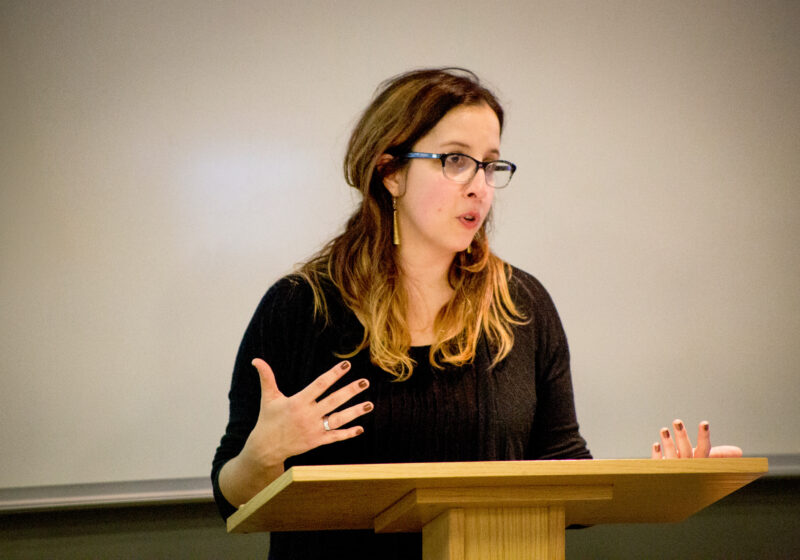Biomechanics, cellular engineering, biomedical optics, and several other fields once considered science fiction are a developing reality with the help of the Whitaker Foundation’s Special Award granting the department $3 million toward the construction of an additional biomedical research facility.The Whitaker Foundation, a private, non-profit foundation, has contributed more than $700 million to support research and education in biomedical engineering. This year, the foundation granted $17 million to five universities- Purdue, Rutgers, The State University of Texas, Austin and UR – specifically for facility construction. This grant is the second that UR has received from the Whitaker Foundation.”The grant we received in 2001, a Development Award, was designed to help us increase the size of our faculty and to build up the departmental infrastructure,” Department of Biomedical Engineering Chair Richard E. Waugh said. “This most recent award was given to us to help support construction of a new building that will house the department and some new research facilities.”The proposal includes a plan for a 91,000-square-foot building, connected to the Wilmot Building, which will possibly house faculty working in the areas of Medical Imaging, Biomedical Optics, and Biomechanics, as well helping to consolidate the research project equipment.”Two of our other research programs in ultrasound and biomechanics that are currently sitting in ‘borrowed’ space in Hopeman Hall will move to the new building,” Waugh said. “Finally, depending on how much space remains, some of the cellular engineering faculty currently in the Medical center may move also.”From its first award from the National Institute of Health to the recent establishment of the School of Engineering and Applied Sciences in 2000, the university has been recognized as competitive and is currently striving to bridge the fields of biomedical engineering and optics. “There is a lot that can happen at the interface between optics and biomedical science,” Waugh said. “The possibilities range from new diagnostic and therapeutic instrumentation for use in clinical settings to advanced optical technology for understanding fundamental biological processes at the cell and molecular level.”In a recent article of Currents, the University newsletter, Waugh said that the funding from the Whitaker Foundation is obvious proof as to the high quality of research conducted at the university, as well as the impressive dedication of the faculty. “Our goal is to be recognized as one of the best biomedical engineering programs in the country, and this [funding] will move us in that direction,” Waugh told Currents. “With Rochester’s distinctive attributes in hands-on research for its students, a strong engineering school, and a well-known medical program, we’ve already had a good head start.”Recent advancements, which underscore the notable biomedical programs at the university, involve magnetic resonance (MR) imaging. According to Waugh, the Orthopedic Biomechanics Lab, headed by Amy Lerner, has developed technology that allows clinicians to visualize the cartilage in the weight-bearing knee joint. “A device has been designed to apply loads simulating standing during routine clinical scans. In collaboration with VirtualScopics, a local image analysis company, we have tested the reliability of measurements of the joint space width between the bones in both the unloaded and loaded knee,” Waugh explained.” “This technique has potential to replace more common weight-bearing x-rays with greater accuracy and three-dimensional information. As a result, it may change the way clinicians evaluate the progression of osteoarthritis in their patients and to facilitate clinical trials of medical treatments.”Last year the Whitaker Foundation awarded the King Laboratory research grant in Biomedical Engineering in order to study the role of leukocyte adhesion in the progression of arteriosclerosis and heart disease. “This ongoing research uses a combination of computational modeling, benchtop experiments, and direct visualization of blood flow in small animals,” Waugh said. “Among their recent findings is the demonstration that hydrodynamic interactions dramatically influence the collective behavior of white blood cells adherent on the vessel wall, and that the chemistry of selectin and integrin binding work together to cause firm adhesion of leukocytes in a manner wholly predictable from engineering models.”Welzer can be reached at bwelzer@campustimes.org.bwelzer@campustimes.org
Israel-Palestine
Conversations that matter: Nora Rubel’s hope of shaping future political discourse on Israel and Palestine
Interpreted by some as an anti-Israel and anti-Zionist series, Rubel emphasized that while the need to support a particular side passionately is understandable, it is crucial to be aware of what you are standing behind by exposing yourself to historical and present knowledge.
fight
We must keep fighting, and we will
While those with power myopically fret about the volume of speech and the health of grass, so many instead turn their attention to lives of hundreds of thousands of human beings.
Cover Letter
Flirting with your hiring managers
If you’d allow me the pleasure of gracing the hallowed halls of your esteemed company, it would endear me greatly.


